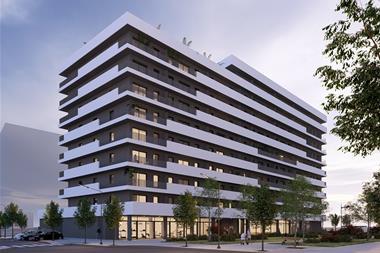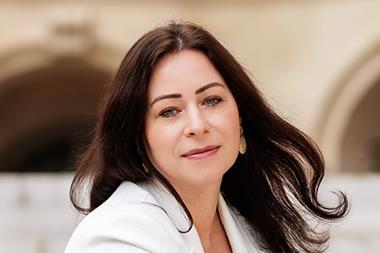The diversity of generations in the workforce is reshaping real estate development, writes Dean Hodcroft
The real estate sector is witnessing a confluence of trends and challenges that are reshaping its very fabric. This evolution is significantly influenced by generational changes, affecting everything from workplace design to residential preferences.
What are the implications of these shifts for key players such as stakeholders, investors and end-users? In what ways are different generations like Baby Boomers, Gen X, Millennials, and Gen Z shaping institutional real estate and what broader impacts do their preferences and concerns have?

One major shift, driven by aging Boomers, is the growing demand for senior living facilities and healthcare properties. Europe, including the UK, is experiencing a significant demographic shift due to an aging population, driven by low fertility rates and increased life expectancy.
EU statistics indicate that the EU-27’s older population will rise from 90.5m in 2019 to 129.8m by 2050, with those aged 85 and over more than doubling to 26.8m. Similarly, in England, the population over 50 has increased by 47% in the last 40 years, with 18% currently over 65. This trend is expected to continue, with the number of people over 80 set to more than double in the next 40 years, while the under-20 population is projected to decline, according to figures cited by PwC.
Identified as a “megatrend” in their recent Emerging Trends in Real Estate Europe 2024 report, data points to an expanding market for specialised real estate. There has been a remarkable 650% increase in investment in retirement and assisted living sectors from 2007 to 2022.
According to Knight Frank, 67% of investors planning to enter the market by 2028. This means now is an opportune moment for investors looking to position themselves in a sector that may be on the cusp.
However, capitalising on this opportunity comes with challenges. The planning process, often misaligned with modern ESG considerations, poses a significant barrier for ESG-minded investors. Fire regulations, currently under intense scrutiny, add complexity but also present an opportunity for innovation in creating safer, more sustainable communities.
Challenges also arise from public perception and local governance. Integrating specialist later living housing into local planning guidelines is essential, with some suggesting it as a solution to housing crises in the western world. The concept of “right-sizing” is key, encouraging older generations to consider later living facilities earlier, and so freeing up the stock of existing homes.
The quality of the new assets which have been built so far are high. For example, senior residences are being built to be more than just residential spaces; they’re integrated environments offering entertainment, health, wellness and social services, blending independence with care, operating more as a little village than a traditional “nursing” or “retirement” home, with some managers and operators offering prospective customers a “try before you buy” deal to experience and perhaps acclimatise a little to a new way of living.
The current market, however, is struggling to keep up with the growing demand for these specialised facilities. This gap presents a unique opportunity for investors, asset managers, and their developer partners to expand into this sector. Some see it as “social infrastructure” – crucial in fulfilling societal needs beyond traditional revenue generation.
This change signifies a shift in the industry’s role and responsibilities. Accordingly, investment strategies are adapting, focusing on developing senior living facilities and healthcare properties and it is expected that new development will address this gap, according to pension funds taking part in recent surveys.
The need for this social infrastructure coincides with a new generation within the institutional real estate workforce who are gaining seniority and happen to want to build ESG-friendly assets. The diversity of generations in the workforce is reshaping real estate development. This is evident in the increasing popularity of flexible co-working spaces and a heightened preference for eco-friendly amenities. These shifts are reflective of larger societal movements and are influencing the types of assets and funds available within institutional real estate.
Crestbridge’s own research into demographic change within the real estate workforce explores how the presence of Gen Z, working together with Boomers, Gen X and Millennials under one roof, is redefining what sort of real estate assets will become available for investment in the future.
The report, entitled From Boomers to Zoomers, how generational shifts are impacting the future of real estate, says 80% of asset managers acknowledge the profound impact of this generational shift on the real estate workforce. It’s shaping investment and development strategies, with younger generations’ preferences for ESG and sustainability across all assets. This touches on all facets of real estate but is felt most keenly around positive social and environmental impact developments are having. No wonder: Gen Z shows a 100% preference for green amenities within assets, the highest of any other generation.
This generational shift, coupled with an aging population, is creating a transformative ripple across the institutional real estate sector. Property development is increasingly focusing on holistic environments that cater to health, wellness, social interaction and sustainability.
For investors and asset managers, this presents an opportunity to innovate with mixed-use developments, smart technologies and eco-friendly amenities. After all, the success of the real estate industry hinges on our collective ability to adapt to these changes, integrating sustainability and social impact to meet the diverse needs of evolving demographics.
To read the latest IPE Real Assets magazine click here.


















